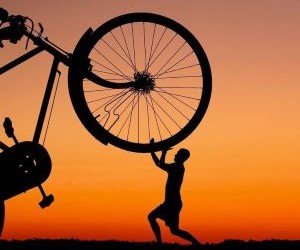Learn how to deal with punctures on long rides with prevention tips, repair techniques, and smart gear choices to keep rolling without stress.
HOW IMPORTANT ARE WIND TUNNEL TESTING AND LAB ANALYSIS FOR GRAND TOUR SETUPS?
This article explores the critical role of wind tunnel testing and lab analysis in preparing riders for Grand Tours. From aerodynamics to biomechanics, these scientific approaches provide the data teams need to fine-tune setups for maximum efficiency. We will examine how controlled environments replicate real-world conditions, how marginal gains stack up, and how the combination of lab precision and wind tunnel accuracy has redefined professional cycling. The goal: understanding why science is now as vital as talent in achieving podium success.

The role of wind tunnel testing
Wind tunnel testing has become one of the most influential tools in modern cycling, especially for Grand Tours where every second counts. By simulating real-world airflow, teams can measure aerodynamic drag, refine riding positions, and evaluate equipment choices under controlled conditions. These insights have shifted performance from intuition-based adjustments to scientifically validated setups.
Aerodynamic optimization
Aerodynamics can account for up to 90% of resistance a rider faces at high speeds. Wind tunnel sessions allow precise adjustments to posture, helmet angles, and even hand positions. Studies show that an optimized aero tuck can save 30–60 seconds over a 40 km time trial—an eternity at the elite level. These small improvements add up across three weeks of racing.
Testing helmet and visor choices under varied yaw angles
Adjusting clothing materials and seam placements
Comparing wheel depth performance under crosswinds
Equipment validation
Wind tunnel testing is also essential for validating manufacturer claims. While brands promise aerodynamic gains, teams rely on tunnel data to confirm those numbers under their riders’ specific conditions. This ensures no guesswork when choosing between a 50 mm or 70 mm wheelset, or a skinsuit with different fabric densities.
Furthermore, simulations allow riders to rehearse positions that balance aerodynamics with comfort. A posture too extreme may save watts but could cost endurance over a mountain stage. The tunnel helps find that equilibrium, turning raw data into tactical advantage.
Lab analysis for performance
While wind tunnels focus on external factors, lab analysis investigates the rider’s internal engine. Modern sports science labs measure physiological and biomechanical variables that determine how effectively a cyclist converts effort into speed. This is critical in Grand Tours, where the balance between endurance, recovery, and explosiveness often decides outcomes.
Physiological testing
VO₂ max, lactate threshold, and critical power are now standard benchmarks in pro cycling. By testing these metrics in the lab, coaches can design individualized training blocks that maximize energy efficiency. For example, a rider with a naturally high VO₂ max may still struggle with lactate clearance; lab sessions reveal these gaps, enabling tailored interventions.
Lactate profiling to optimize climbing strategy
Muscle oxygenation tracking during interval simulations
Metabolic analysis to fine-tune nutrition plans
Biomechanical studies
Beyond physiology, biomechanics ensure riders maintain efficient movement patterns under fatigue. Motion-capture labs analyze pedaling dynamics, revealing inefficiencies that can waste watts. Adjustments to crank length, saddle position, or cleat alignment may prevent overuse injuries and preserve power across grueling stages.
Additionally, labs now employ force sensors to assess left-right leg imbalances, a critical factor when uneven loads can accumulate into performance decline. Corrective strategies, such as targeted strength programs, are then integrated into training schedules.
Simulating Grand Tour conditions
Labs also replicate the physiological stress of Grand Tours. Heat chambers, hypoxic environments, and recovery monitoring allow riders to adapt before facing the Alps or Pyrenees. By measuring biomarkers like cortisol, teams can predict overtraining risks, ensuring athletes arrive at each stage in peak form.
The synergy of science and strategy
Grand Tours are no longer won by talent alone—they are the product of meticulous scientific preparation. The fusion of wind tunnel testing and lab analysis creates a comprehensive performance model that aligns equipment, physiology, and strategy into a cohesive whole.
From marginal gains to decisive edges
The concept of marginal gains, popularized by British Cycling, emphasizes stacking small improvements for large cumulative effects. A 2-watt saving in the wind tunnel, combined with a 1% lactate clearance improvement in the lab, can separate podium contenders from the peloton. This philosophy has now become standard practice across all Grand Tour teams.
Synchronizing aero testing with metabolic data
Aligning nutrition strategies with lab-verified energy demands
Using tunnel data to refine time trial pacing
Decision-making during races
Science doesn’t end at the lab or tunnel. Data gathered before a race informs in-race strategies, such as when to attack, when to conserve, or which equipment to select for varying terrain. Wind tunnel profiles of crosswind handling, combined with lab endurance metrics, influence how a rider tackles key stages.
Even psychological readiness is shaped by data. Knowing that equipment and body are optimized boosts rider confidence, a non-quantifiable but critical factor across 21 stages.
Future directions
Looking ahead, expect deeper integration of AI and real-time analytics. Wind tunnel sessions could evolve into VR-enabled simulations, while lab data streams directly into training apps with adaptive feedback. The Grand Tour rider of the future will operate within a continuous loop of testing, racing, and refinement—making cycling as much about algorithms as about athleticism.
Ultimately, the combination of wind tunnel testing and lab analysis is not just important—it is indispensable. Together, they provide the blueprint for turning potential into podiums.
YOU MAY ALSO BE INTERESTED






